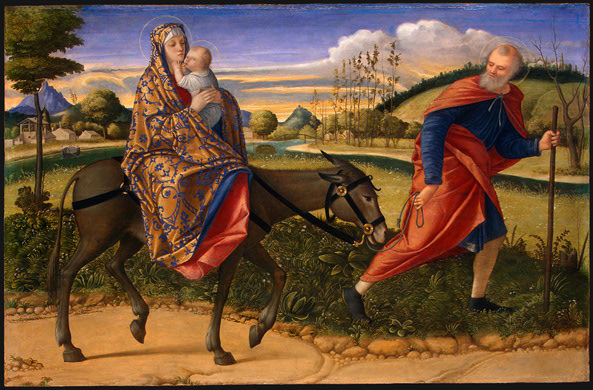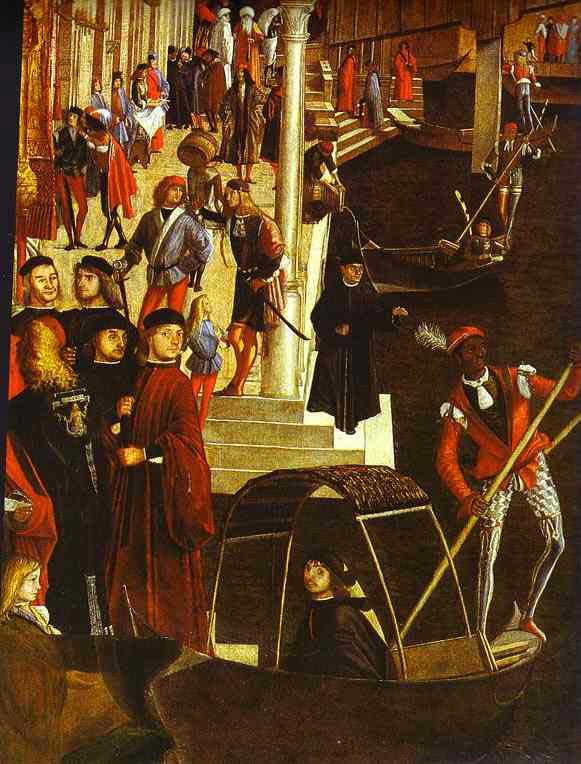Vittore Carpaccio (1460-1526)
Get a Carpaccio Certificate of Authenticity for your painting (COA) for your Carpaccio drawing.
For all your Carpaccio artworks you need a Certificate of Authenticity (COA) in order to sell, to insure or to donate for a tax deduction.
Getting a Carpaccio Certificate of Authenticity (COA) is easy. Just send us photos and dimensions and tell us what you know about the origin or history of your Carpaccio painting or drawing.
If you want to sell your Carpaccio painting or drawing use our selling services. We offer Carpaccio selling help, selling advice, private treaty sales and full brokerage.
We have been authenticating Carpaccio and issuing certificates of authenticity since 2002. We are recognized Carpaccio experts and Carpaccio certified appraisers. We issue COAs and appraisals for all Carpaccio artworks.
Our Carpaccio paintings and drawings authentications are accepted and respected worldwide.
Each COA is backed by in-depth research and analysis authentication reports.
The Carpaccio certificates of authenticity we issue are based on solid, reliable and fully referenced art investigations, authentication research, analytical work and forensic studies.
We are available to examine your Carpaccio painting or drawing anywhere in the world.
You will generally receive your certificates of authenticity and authentication report within two weeks. Some complicated cases with difficult to research Carpaccio paintings or drawings take longer.
Our clients include Carpaccio collectors, investors, tax authorities, insurance adjusters, appraisers, valuers, auctioneers, Federal agencies and many law firms.
We perform Vittore Carpaccio art authentication, appraisal, certificates of authenticity (COA), analysis, research, scientific tests, full art authentications. We will help you sell your Vittore Carpaccio or we will sell it for you.

Vittore Carpaccio was a Venetian painter who studied under Gentile Bellini. He is best known for a cycle of nine paintings, The Legend of Saint Ursula. The facts of his life are obscure, but his principal works were executed between 1490 and 1519; and he ranks among the early Venetian masters. The date of his birth is conjectural. He is first mentioned in 1472 in a will of his uncle Fra Ilario, and Dr Ludwig infers from this that he was born c. 1455, on the ground that no one could enter into an inheritance under the age of fifteen; but the inference ignores the possibility of a testator making his will in prospect of the beneficiary attaining his legal age.

Consideration of the youthful style of his earliest dated pictures (“St Ursula” series, Venice, 1490) makes it improbable that at that time he had reached so mature an age as thirty-five; and the date of his birth is more probably to be guessed from his being about twenty-five in 1490.

What is certain is that he was a pupil (not, as sometimes thought, the master) of Lazzaro Bastiani, who, like the Bellini and Vivarini, was the head of a large atelier in Venice, and whose own work is seen in such pictures as the “S. Veneranda” at Vienna, and the “Doge Mocenigo kneeling before the Virgin” and “Madonna and Child” (formerly attributed to Carpaccio) in the National Gallery, London.

In later years Carpaccio appears to have been influenced by Cima da Conegliano (e.g. in the “Death of the Virgin,” 1508, at Ferrara). Apart from the “St Ursula” series, his scattered series of the “Life of the Virgin” and “Life of St Stephen,” and a “Dead Christ” at Berlin, may be specially mentioned.

Other works include the Ten thousand martyrs of Mount Ararat , ‘St.Sebastian’ National Museum of Serbia in Belgrade,’Holy Pilgrim’, National Museum of Serbia in Belgrade . Still wondering about an Italian painting in your family collection? Contact us…it could be by Vittore Carpaccio.
Reviews
1,217 global ratings
5 Star
4 Star
3 Star
2 Star
1 Star
Your evaluation is very important to us. Thank you.
